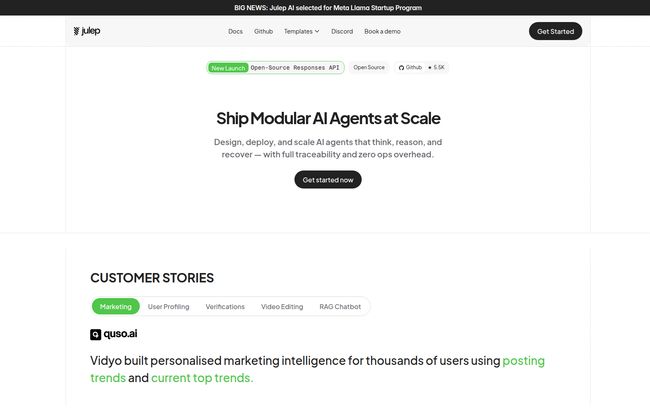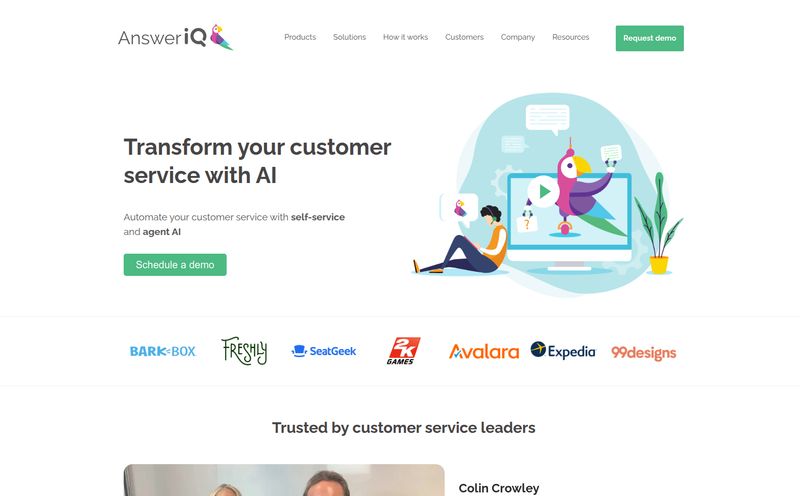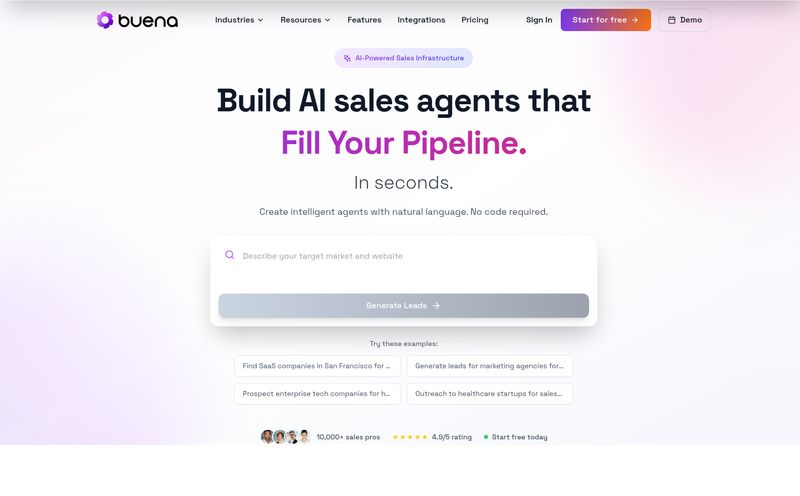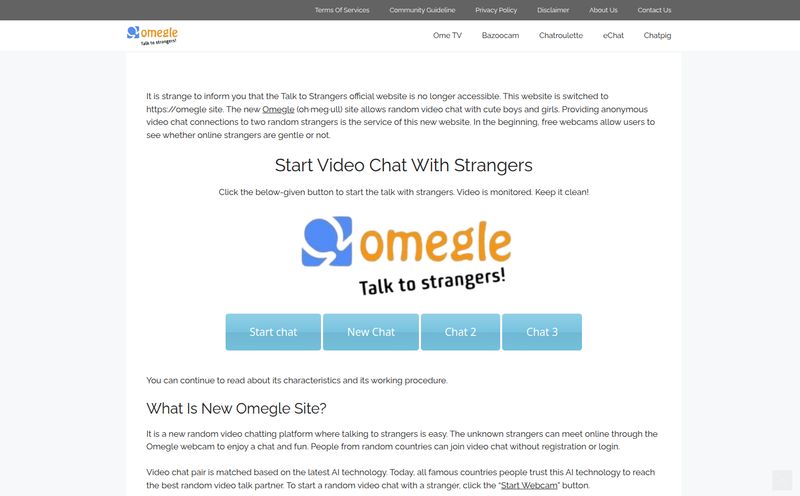The AI space is noisy. Every other day, there's a new model, a new framework, or a new “revolutionary” platform that promises to change everything. As someone who’s been neck-deep in SEO and traffic generation for years, I've seen these hype cycles come and go. Most of the time, I just roll my eyes and get back to analyzing SERPs.
But every so often, something comes along that isn't just another flashy model. It’s a tool. A piece of plumbing. Something that addresses a deep, nagging frustration that developers and product people have been quietly complaining about. And lately, that's what I've been hearing about Julep AI. It’s not an LLM itself; it's something different. It claims to be the backend for building AI agents that can actually do things. So, I decided to put on my old dev hat and see if it’s the real deal or just more snake oil.
So What Exactly is Julep AI? Let's Break It Down
Think about building a sophisticated AI agent. You have the brain—let's say it's GPT-4, Claude, or some open-source model. Great. But how does that brain actually interact with the world? How does it remember conversations, perform a Google search, check a price on Amazon, and then update a Notion doc?
That's the messy part. You're suddenly juggling state management, API calls, error handling, and trying to chain multiple steps together in a logical sequence. It quickly becomes a tangled mess of custom code and infrastructure nightmares.
Julep AI steps into this chaos and says, “Hey, let me handle that for you.” In essence, it’s an API-first backend designed specifically for creating and deploying complex, multi-step AI workflows. It’s not the AI's brain; it’s the nervous system. It connects the brain to the limbs (APIs, web browsers, data sources) and gives it a memory, allowing it to perform tasks that take time and involve multiple actions. It provides the scaffolding so you can focus on building the cool parts, not the pipes.
The Core Features That Actually Matter
A feature list is just a list. What I care about is what those features let me do. And Julep has a few capabilities that genuinely caught my attention.
The Magic of Browser Automation
This is a big one. Julep has a feature that lets your AI agent control a web browser. We're not just talking about basic web scraping. We're talking about building agents that can log into accounts, fill out forms, click buttons, and navigate websites that dont have a public API. This is huge. Imagine an AI assistant that can automatically check for flight deals, order your weekly groceries, or monitor competitor websites for changes, all by just using them like a human would.
For years, this kind of automation required brittle and complex tools like Selenium or Puppeteer, which were a pain to maintain. Julep seems to be packaging that power into a simple, API-driven command. That alone opens up a ton of possibilities for practical, real-world automations that were previously too much of a hassle to build.

Visit Julep AI
Building Complex Workflows Without the Headache
The core of Julep is its ability to define these multi-step chains of logic. You want an agent that first searches Google, then synthesizes the top 3 results, then uses that synthesis to write a social media post, and finally schedules it via a social media API? That's a workflow.
Julep has you define these flows using YAML. Now, I can already hear some of you groaning. YAML? Yes, YAML. If you've ever configured a CI/CD pipeline or worked with Docker Compose, you'll feel right at home. It’s a standard for a reason: it’s structured and human-readable. It might be a small learning curve for those completely new to it, but it’s far better than hard-coding complex logic into your application. This declarative approach means you can clearly see the agent's entire thought process laid out in a file.
Production-Ready from Day One? A Bold Claim
Every startup claims their product is “production-ready.” It’s one of those phrases that has lost most of its meaning. But with Julep, they're referring to some very specific, and very important, engineering problems they've solved for you.
Specifically, they handle automatic scaling, fault tolerance, and state management. What does that mean in plain English? If your AI agent suddenly gets popular and a thousand people start using it at once, Julep’s infrastructure is designed to handle the load without you needing to scramble and provision more servers. If one step in a long 10-step process fails, it can retry or handle the error gracefully without the whole thing crashing. And for tasks that might take minutes or even hours, it remembers where it was. That state management piece is critical for anything more complex than a simple question-and-answer bot.
"We need building our AI stack where we were using open source models and a vector database and had to do some complex things on our backend... With Julep we were able to abstract away that complexity and just focus on our business logic."
- Madhavan, as seen on Julep's site
My Honest Take on Julep: The Good, The Bad, and The YAML
No tool is perfect. It's always about trade-offs. So here's my unfiltered perspective.
The good stuff is pretty clear. The speed is the main attraction. The idea of going from a concept for a complex AI agent to a deployed prototype in minutes, rather than weeks or months, is incredibly appealing. The modular design is also a huge plus. You're not locked into a specific LLM. If a better, cheaper model comes out next month, you can just swap it into your workflow. That's smart. And the fact that they offer a free tier is the right move—it lets developers like me kick the tires without pulling out a credit card.
Now, for the not-so-good stuff. The reliance on YAML will be a hurdle for some. It’s not a difficult language, but it’s another thing to learn. More importantly, the pricing model, while not publicly detailed, is described as usage-based. This is a double-edged sword. It's fantastic for starting out because your costs are low. But as you scale, it can become unpredictable if you don't have proper monitoring in place. You're also, by definition, building on their platform. This is a classic convenience vs. control trade-off. You get speed and managed infrastructure, but you're also reliant on Julep for that orchestration. For most startups and teams, that's a trade they'll happily make.
Who Should Be Using Julep AI?
I don't think this is for everyone, but for certain groups, it looks like a near-perfect fit.
- Startups and Lean Teams: If you're a small team trying to build an AI-powered product, Julep could be your secret weapon. It lets you punch way above your weight, offering a level of infrastructure sophistication that would normally require a dedicated DevOps team.
- Developers Building Agentic Tools: If your core product is an AI agent—a research assistant, a personal shopper, a content generator, a marketing automator—then Julep is essentially your purpose-built backend.
- Enterprises Prototyping AI: For larger companies looking to experiment with agentic AI without disrupting their core systems, Julep provides a fantastic, sandboxed environment to build and test powerful prototypes quickly.
A Quick Look at the Pricing Situation
As of this writing, Julep doesn't have a public pricing page, which is pretty common for developer-focused platforms still finding their enterprise footing. However, based on the information available, we can piece together the model.
There's a free tier, which is perfect for experimentation and small personal projects. Beyond that, it shifts to a usage-based model. This likely means you'll pay based on factors like the number of workflow executions, the compute resources used, the complexity of tasks, and maybe data storage. The best advice I can give is to start with the free tier to understand your potential usage patterns and then reach out to their team or book a demo to discuss scaling, as they suggest on their site.
Frequently Asked Questions about Julep AI
- What is Julep AI in simple terms?
- It's the backend plumbing for AI agents. It helps you connect AI models to other tools (like browsers and APIs) and manage complex, multi-step tasks without having to build all the infrastructure yourself.
- How is Julep different from just using the OpenAI API?
- The OpenAI API gives you access to the AI's brain (the LLM). Julep provides the entire nervous system. It orchestrates tasks, manages memory (state), handles errors, and connects the brain to various tools, which is something you'd have to code from scratch otherwise.
- Do I need to be a YAML expert to use Julep?
- No, but it helps to be familiar with it. YAML is used to define the steps in your workflow. It's designed to be readable, and if you've worked with similar configuration files, you'll pick it up very quickly. They provide docs and examples to get you started.
- Is Julep AI secure enough for enterprise applications?
- The platform is built with production use in mind, which includes considerations for security and enterprise-grade needs. For specific compliance or security requirements, it's always best to contact their team directly to discuss your use case.
- Can I use open-source models with Julep?
- Yes. Julep is designed to be model-agnostic. You can integrate with major LLM platforms, custom models, or any tool that has an API, giving you the flexibility to choose the best components for your agent.
- What's the deal with Julep's pricing?
- It starts with a free tier for development and testing. For larger applications, it moves to a usage-based model where you pay for the resources you consume. This is cost-effective for starting but requires monitoring as you scale.
Final Thoughts: The Right Tool at the Right Time?
After digging in, I'm genuinely intrigued by Julep AI. It’s not trying to be the flashiest thing in the room. It’s a tool for builders. It’s solving a real, unglamorous, but absolutely critical problem in the AI development lifecycle: orchestration.
We're moving past the era of simple chatbots into a new phase of agentic AI that can perform meaningful, complex tasks. And to do that reliably and at scale, you need a robust nervous system. Julep AI might just be one of the best pre-built options on the market today. It lowers the barrier to entry for creating truly useful AI, and for that reason alone, it's worth keeping a very close eye on.



